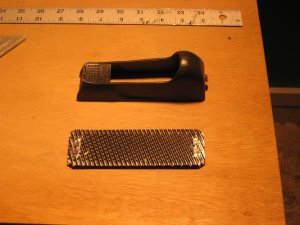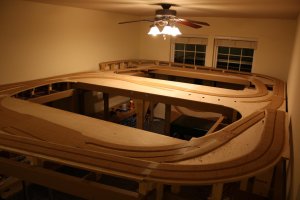A2TwrOpr
Member
Good morning guys. I've been thinking about my layout build and losing sleep (literally) over this one. Does anyone make beveled cork road for going from the cork down to the plywood base (bench work)? I read that you can go from the cork to the plywood without any type of support. Just back fill the area with lots of ballast and go. That doesn't seem very stable to me though. What have you done to get around this problem?



